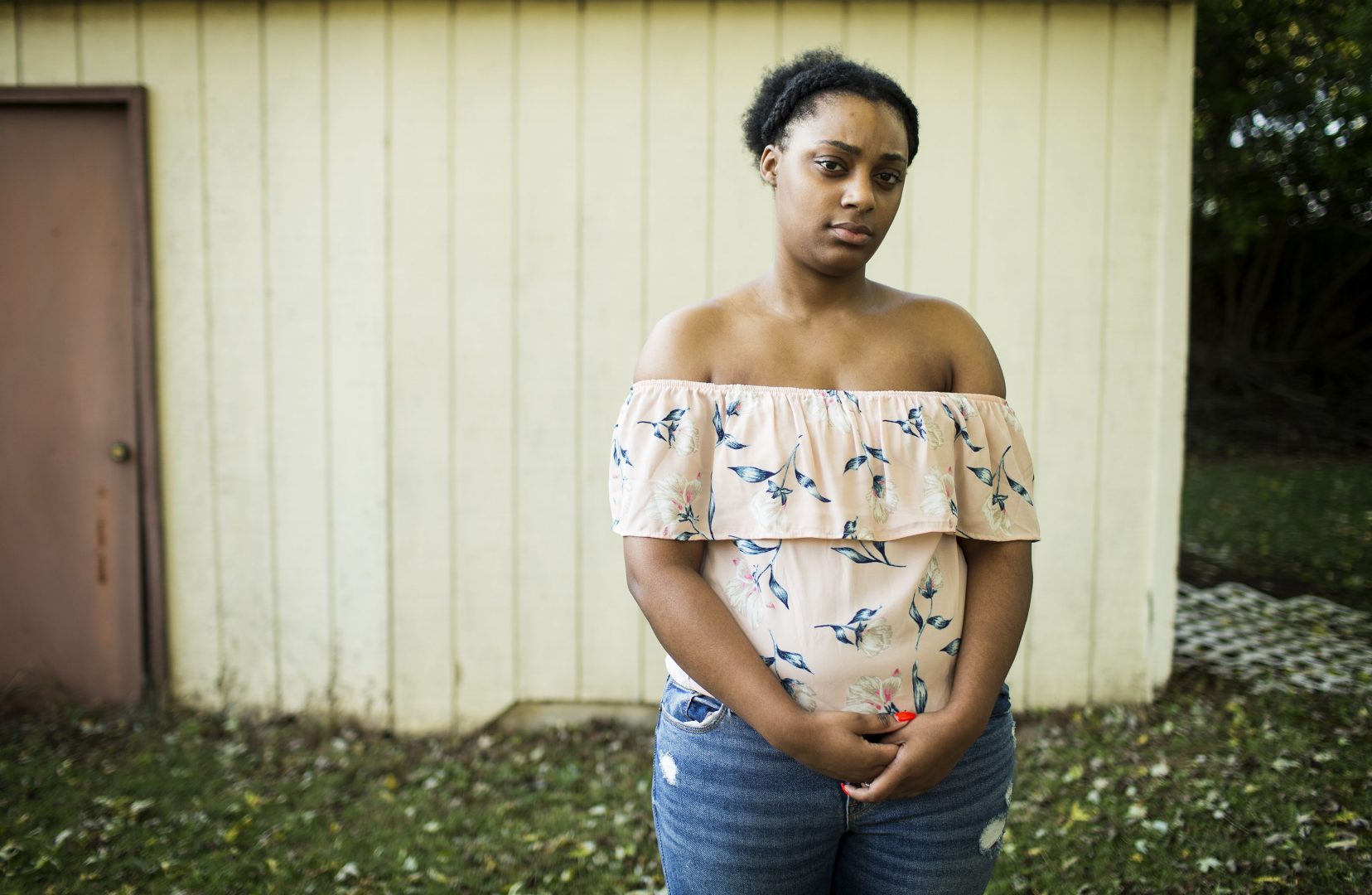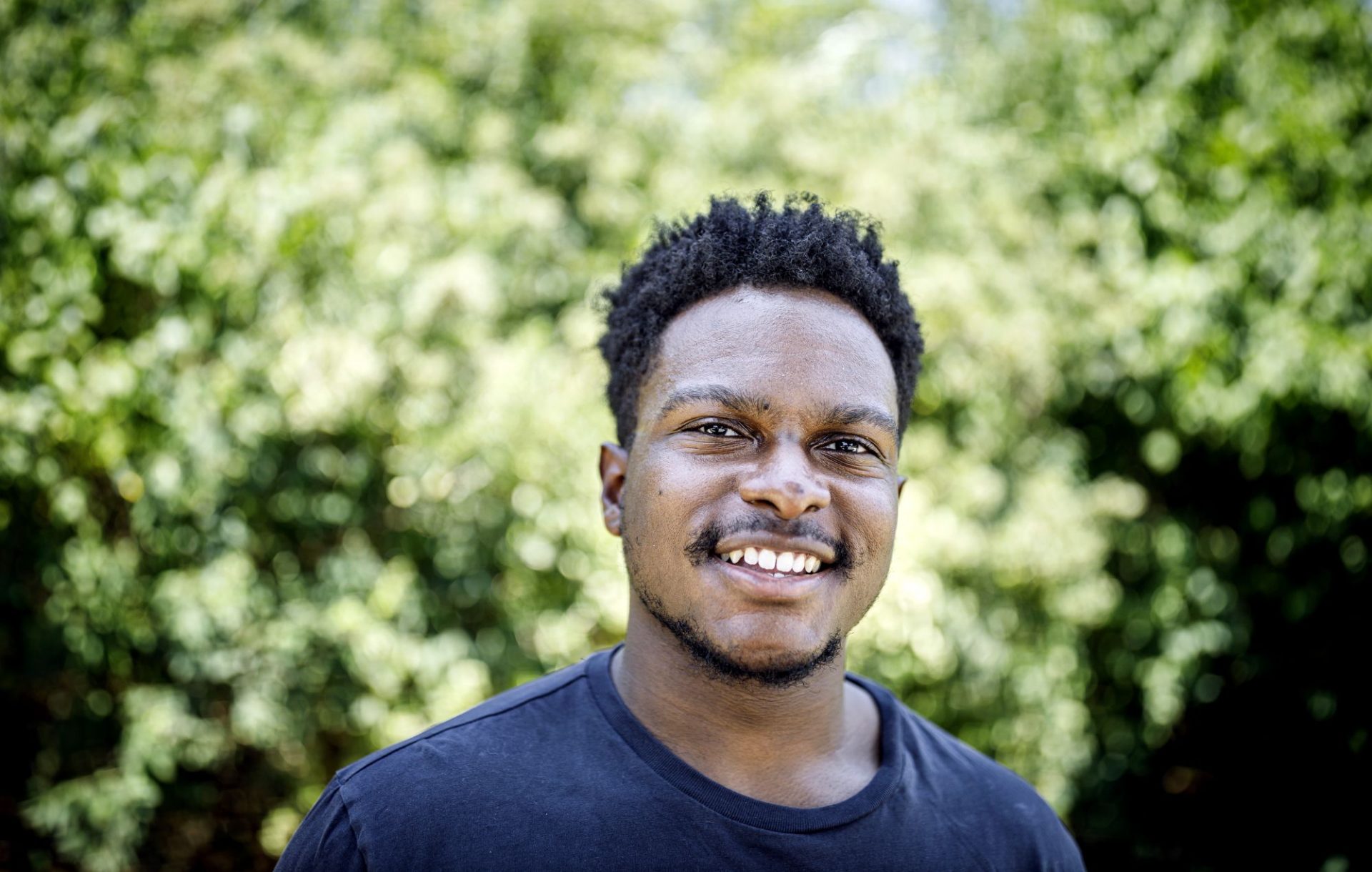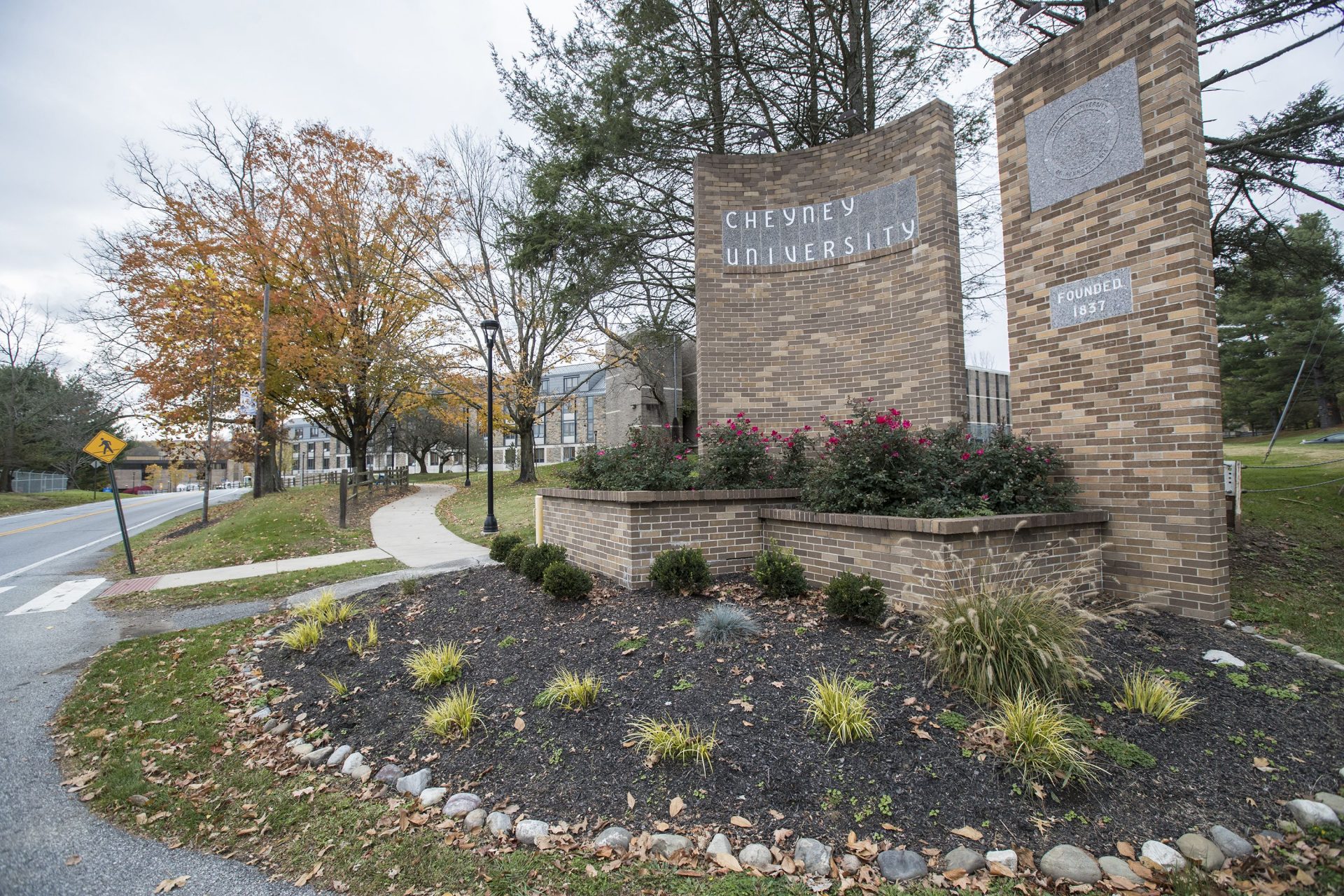
Ada Bailor, a student at Indiana University of Pennsylvania, said the "campus doesn’t allow Black students to feel safe."
Sean Simmers / PennLive for Spotlight PA

Ada Bailor, a student at Indiana University of Pennsylvania, said the "campus doesn’t allow Black students to feel safe."
Sean Simmers / PennLive for Spotlight PA

Sean Simmers / PennLive for Spotlight PA
Ada Bailor, a student at Indiana University of Pennsylvania, said the "campus doesn’t allow Black students to feel safe."
 Spotlight PA is an independent, non-partisan newsroom powered by The Philadelphia Inquirer in partnership with PennLive/The Patriot-News and other news organizations across Pennsylvania. Sign up for our free weekly newsletter.
Spotlight PA is an independent, non-partisan newsroom powered by The Philadelphia Inquirer in partnership with PennLive/The Patriot-News and other news organizations across Pennsylvania. Sign up for our free weekly newsletter.
Ada Bailor’s time at Indiana University of Pennsylvania has been marked by a steady drumbeat of racism.
Her first month on campus, in 2017, an image of a fellow student’s Snapchat emerged, showing a burnt sandwich with the caption, “How do you like your grilled cheese? The same as my slaves.” This past September, a video shared dozens of times on social media captured a student using racial slurs and threatening violence against students of color.
Then there was more subtle racism, Bailor said, such as professors discouraging her from taking the same number of science and math classes as others because they didn’t think she would succeed. When she raised concerns about discrimination, an advisor lectured her on learning to work in a professional environment, even though she’s been a registered nurse aide since age 17.
Racism on the Western Pennsylvania campus is always met with the same formulaic response by the university, Bailor said. First, they send out a statement condemning the action. Second, they hold town halls to talk about it. And third, they move on without making meaningful changes.
She’s seen the same pattern since Minneapolis police killed George Floyd.
“There’s not really a place for us here,” said the 22-year-old senior. “The campus doesn’t allow Black students to feel safe. It’s like you’re here, but don’t shake the table or make any noise.”
For years, Pennsylvania’s state higher education system — 14 public universities known collectively as PASSHE — has focused on recruiting more students of color to boost enrollment numbers and fulfill its mission to provide opportunities to all Pennsylvanians. But too often it fails to support those students once on campus, a Spotlight PA review found.
Today, although the percentage of minority students enrolled in Pennsylvania’s public colleges has almost doubled since 2008, their graduation rate is still nearly 20 percentage points lower than that of white students. And the difference in retention rates — how many first-year students make it to the second year — has actually grown between white and nonwhite students.
At best, many students of color said they feel unwelcome and ill-supported.
At worst, they feel unsafe and targeted.
This June, video surfaced of a Slippery Rock University student threatening to harm Black and gay classmates. Late last year, a Bloomsburg University student enacted a slave auction. In 2016, a Shippensburg University student referred to minority students as “dark meat” and “garbage.”
Interviews with two dozen students and administrators also revealed other harms against students of color that receive less attention, such as faculty and coaches treating them more harshly than their white peers, universities underfunding their clubs, campus police intimidating them, and white counselors struggling to understand the impact of racism on their mental health.
Now, with the dual forces of the coronavirus pandemic — which has disproportionately affected communities of color — and a nationwide reckoning on systemic racism and police brutality, students said they’re tired of universities responding to hate with platitudes. They want structural changes to long-standing inequities that take a mental, emotional, and academic toll.
“They don’t understand that these things create an unnerving and tense environment for students like us,” said Khalil Nelson, a senior at Bloomsburg University. “We’re already outnumbered when it comes to the student population. We want to at least feel like we have some institutional support.”
PASSHE Chancellor Daniel Greenstein said the system takes students’ concerns seriously and has hired a new vice-chancellor to coordinate diversity and inclusion efforts across all universities.
Individual colleges in the system have launched their own initiatives, too. IUP, for example, published an official protocol it will use to respond to incidents of bias and has created a student advisory board to work with campus police.
Officials with the university said they investigate all incidents of racism. While they cannot comment on specific cases due to student privacy laws, they said outcomes can include discipline, restorative justice, or educational initiatives.
“I want to respect what students have experienced,” said Thomas Segar, IUP’s vice president of student affairs, “but we have swiftly responded to incidents, and in some cases, we responded to incidents that were never public.”
For years, the PASSHE system has been battling underfunding, decreasing enrollment, and now the upending of traditional instruction by the coronavirus. Amid all these challenges, addressing systemic inequities that have persisted for decades is daunting.
“We’re creating an opportunity to accelerate the work,” Greenstein said. “But I don’t want to oversell. This is the hardest thing we’ll do, and needles are always slow to move.”
The state’s public universities have been trying to address racial inequities for nearly a decade.
In 2011, the system hired the University of Southern California’s Rossier Center for Urban Education to help enroll more students of color and increase their graduation rates. The action was partially driven by the state’s funding model at the time, which allocated money to universities based on student outcomes.
“We knew if we wanted to meet the goals of success for all students, we had to address the success rates for students of color and students with increased financial needs,” said Jim Moran, who worked in the PASSHE system from 2004 to 2014 and led the work with USC.
Some universities improved the enrollment of students of color by reaching out to those with incomplete applications rather than outright rejecting them. Others increased advising for undeclared majors, who were disproportionately Black students, and focused on awarding campus jobs to students with financial need.
A systemwide strategic plan adopted in 2014 aimed to cut the graduation gap between minority students and white students in half by 2020.
But then PASSHE leadership changed, and the work on racial equity lost momentum, said Estela Bensimon, director of the Center for Urban Education.
Greenstein said graduation and retention disparities were created in part by universities accepting students who were academically unprepared and dropped out after freshman year. Many schools have tightened their admissions process in recent years, he said, which will probably lead to higher graduation rates in the future.
But for some students, change isn’t coming fast enough.

Dan Gleiter / PennLive for Spotlight PA
Lynn Darby transferred from Bloomsburg University to Temple in Philadelphia after feeling like an outsider on campus.
When Lynn Darby first visited Bloomsburg University in October 2015, his tour guide — a Black student — talked about how the Northeast Pennsylvania school was diversifying.
“It felt like something I wanted to be a part of,” Darby recalled. He arrived on campus in 2016, as an education major aiming to teach students of color from low-income families.
Jaricelys Gonzalez also enrolled excitedly in 2015, after years of seeing students of color on the billboards advertising Bloomsburg University near her Allentown home. She became an orientation leader for new students and posed for photos for recruitment materials.
But over time, both Darby and Gonzalez said they grew disillusioned.
Darby was tired of being the only Black student in most classes, seeing Confederate flags around town, and feeling like an outsider on campus. After his sophomore year, he transferred to Temple University in Philadelphia. There, his classes are more diverse and the halls are lined with photos of successful Black alumni, he said.
For Gonzalez, the disappointment in Bloomsburg grew over time. Her freshman year, she saw people dress as Ku Klux Klan members for Halloween. When she walked on campus talking to her mom on the phone in Spanish, students told her to “go back where she came from,” she said. But it was two incidents her senior year that really made her question the university’s commitment to students of color.
After a video of a student enacting a slave auction spread widely on social media in November 2019, the university said it could not suspend or expel him due to First Amendment protections. Then in June 2020, Bloomsburg declined to take action against fraternity members whose leaked texts showed a member objected to admitting Black students because it would prevent him from being “openly racist.” The university said the fraternity had already been suspended last year for violations of the student code of conduct and has not been a recognized student organization since.
University concerns about the First Amendment are valid, said Adam Steinbaugh, a lawyer for the Philadelphia-based Foundation for Individual Rights in Education. Hate speech is generally protected by the Constitution, and public universities that try to punish students for such speech can face expensive lawsuits.
But creating an inclusive campus goes far beyond punishing individuals, students said. Years of campus climate surveys and diversity task force reports have listed concrete suggestions, from hiring more diverse faculty who can mentor students of color to reevaluating curriculums and funding more clubs geared toward students of color.
Yet too often, students said, those reports have sat on a shelf, gathering dust.
“It seems really easy for Bloom to show off their students of color,” Gonzalez said. “But they’re not backing them up. Sometimes I feel like I’m just here to fulfill their number of Hispanic students needed on campus.”
Bloomsburg University officials said they’re working on a number of initiatives to improve the campus climate, including additional bias training for staff and students, inviting alumni of color to mentor current students, and advocating for more faculty and counselors of color.
“While we may not know what happens to a student from a conduct process,” said Shavonne Shorter, special assistant to the president for diversity, equity, and inclusion, “this just motivates me to continue in the work I’m doing to make sure the rest of the campus community sees this is not something we support, welcome, or condone in any way.”
Steven Kniffley Jr., associate director for the Spalding University Center for Behavioral Health in Kentucky and a psychologist who specializes in racial trauma, said the concerns expressed by PASSHE students are common among minorities at predominantly white institutions. Many students arrive on campus with layers of trauma, he said, whether it’s from incidents of racism they experienced growing up or violence against Black Americans they’ve seen on television.
“It’s already communicated to them that the world is an unsafe place for Black and brown folks,” Kniffley said. “Then if you’re constantly exposed to a curriculum that doesn’t reflect you and faculty that doesn’t reflect you, there’s a good chance you’re going to internalize racism.”
The result is students often feeling like they don’t belong or they’ll never be good enough, Kniffley said. Some develop depression and anxiety. And research shows that Black students are less likely to receive mental health treatment than their white counterparts.
Some worry about the stigma or cost of counseling services, while others fear they’ll be judged by white counselors who have not experienced racism.
Sierra Taylor went to the counseling center at Kutztown University in spring 2018 to discuss her concerns about discriminatory treatment from a coach on the women’s basketball team. The counselor listened kindly as Taylor described having nightmares about the coach, Taylor said, but she didn’t seem to truly understand and provided few actionable suggestions.
After a few sessions, Taylor stopped going.
Kutztown University officials said there are currently no counselors of color on campus, but they are working to ensure diversity is prioritized for future hires. The Multicultural Center can also offer students resources and staff to connect with, they said.
“It’s frustrating,” Taylor said about feeling isolated on campus with few options for support. “But it’s something I’m used to. At some point, I go numb to the feeling of it.”

Michael Bryant / Philadelphia Inquirer
Cheyney University is the oldest historically Black college and university in the nation.
At most PASSHE universities, white students account for more than 75% of the population. But two colleges stand out.
Cheyney University is the oldest historically Black college and university in the nation. Its students were 82% Black and 12% Hispanic, as of fall 2019.
Although Cheyney has faced bleak financials, mismanagement, and plummeting enrollment in recent years, student government president Tyah Fuller said the Southeast Pennsylvania campus is a haven for students of color.
Each semester begins with an event for students and campus police to meet and discuss concerns, Fuller said. And throughout the year, campus police can be seen in the stands at basketball games or hosting barbeques to get to know the students.
The university also employs a diverse group of success coaches, one of whom is assigned to each student, and follows them throughout their college career to discuss any mental, emotional, or life concerns that may deter their success.
“I have people on staff here who I call mom or uncle,” Fuller said, “and a lot of other students have that as well. We feel like this is home.”
Cheyney President Aaron Walton said the university is working with the PASSHE chancellor’s office to share some of its practices with other schools. But, Walton cautioned, what works for a small college of 600 students may not apply at the system’s larger universities that enroll up to 17,000 students.
East Stroudsburg University, which is nearly eight times larger than Cheyney, has seen the largest growth in minority students of any PASSHE school since fall 2008, and today has a 40% minority student population.
Student leaders said they’ve harnessed that diversity to push for more inclusive measures, including increased financial resources and mental health support — two factors that may affect students’ decisions to drop out.
“ESU is getting better,” said Leila Bouchekouk, former student body president who graduated this spring, “just not at the rate that’s needed. If we are truly sincere in supporting students of color, we have to bring the voices of students, faculty, and administrators who are doing this work to the forefront.”
Last year, the Northeast Pennsylvania university brought on Santiago Solis as vice president of campus life and inclusive excellence to lead diversity efforts. But this May, Solis’ statement in response to George Floyd’s killing, which emphasized balancing racial justice and free speech, drew hundreds of critical comments on social media from students and alumni who felt he was using the First Amendment to deflect the university’s responsibility to address racism.
Solis said his goal is to empower students to lead change themselves.
“While our hands might be tied as employees of the institution,” he said, “students can have very different conversations.”
That’s why he’s been sending student leaders information about past social justice movements and offering to connect them to community leaders who can help organize marches and other activities.
His office is also leading training efforts for campus police to meet with students and mental health counselors, launching a mentoring program in the fall to help retain diverse faculty, and adding diversity training to incoming students’ requirements.
Keeping universities focused on that type of progress is where student leaders come in, said Jimel Calliste, advisor for the NAACP’s youth and college division in Pennsylvania.
He advises all 21 chapters to keep a written record of commitments administrators have made, especially at moments like this when statements are being issued frequently. With these records, future students can pick up right where their predecessors left off.
“It’s sad that it took [George Floyd’s] death for people to be like, ‘I get it,’” Calliste said. “But we have to use that momentum. When it comes to issues of race on campus, there is no more question of the relevance.”
This reporting was supported by a Rosalynn Carter Fellowship for Mental Health Journalism.
The days of journalism’s one-way street of simply producing stories for the public have long been over. Now, it’s time to find better ways to interact with you and ensure we meet your high standards of what a credible media organization should be.